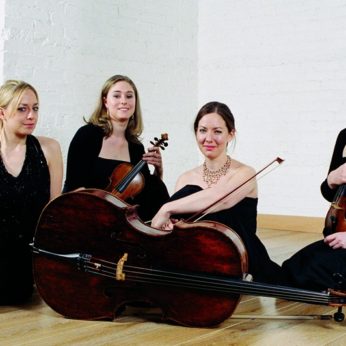Joseph Haydn was born two hundred years ago in the village of Rohrau on the Hungarian border, the son of a wheelwright. He trained at the choir school of St Stephen’s Cathedral in Vienna from the age of eight until his voice broke. For eight years after that he eked out a miserable existence as a jobbing musician and composer, before he got his first permanent post as Kapellmeister. In 1761 he became vice-Kapellmeister to one of the richest men in the Empire, Prince Paul Anton Esterházy, and in 1766 he became Kapellmeister, a post he retained for the rest of his life.
Haydn’s earliest divertimento-style works for the combination of two violins, viola and cello date from the late 1750s but Haydn himself directed that his quartet catalogue should begin with Opus 9. So tonight’s concert celebrates this most important of bicentenaries by featuring his first and last completed string quartets.
So here right at the birth of the classical string quartet Haydn had a number of problems to resolve, first to create a new-style and substantial opening movement and then to find appropriate slow movements, minuets and finales. At this early stage the quartet took the form of a violin quartet where the first violin predominates, doubtless encouraged by the presence of Luigi Tomasini in the Esterházy orchestra. Another early decision was to place a light-hearted minuet second to balance the intellectually demanding first movement. So we get a symetrical outline of long-short-long-short movements, the first aimed at the intellect, the second at the pleasure of the dance, the third appeals to our emotions and the last becomes a highly physical race to the finish. Looked at theatrically we have a dramatic imbroglio with a cleverly woven plot, a danced pantomime, a lyrical confession or aria and a closing scene straight from commedia dell’arte.
There is much still of the Baroque in this delightful quartet, such as the Moderato’s variation technique and culminating in the gorgeous Adagio, a richly ornamented Siciliano. Here already we hear the master at work.
